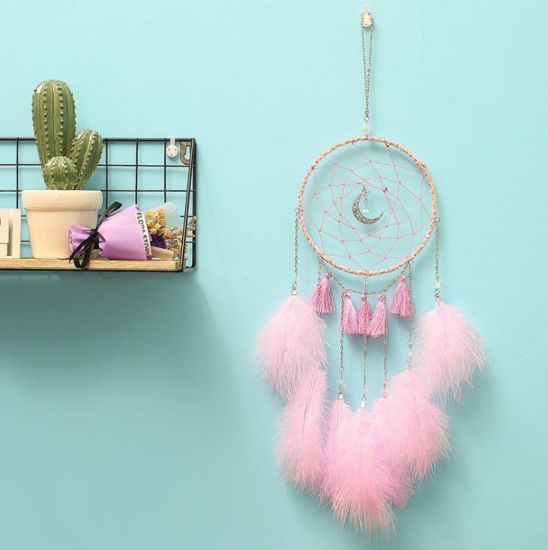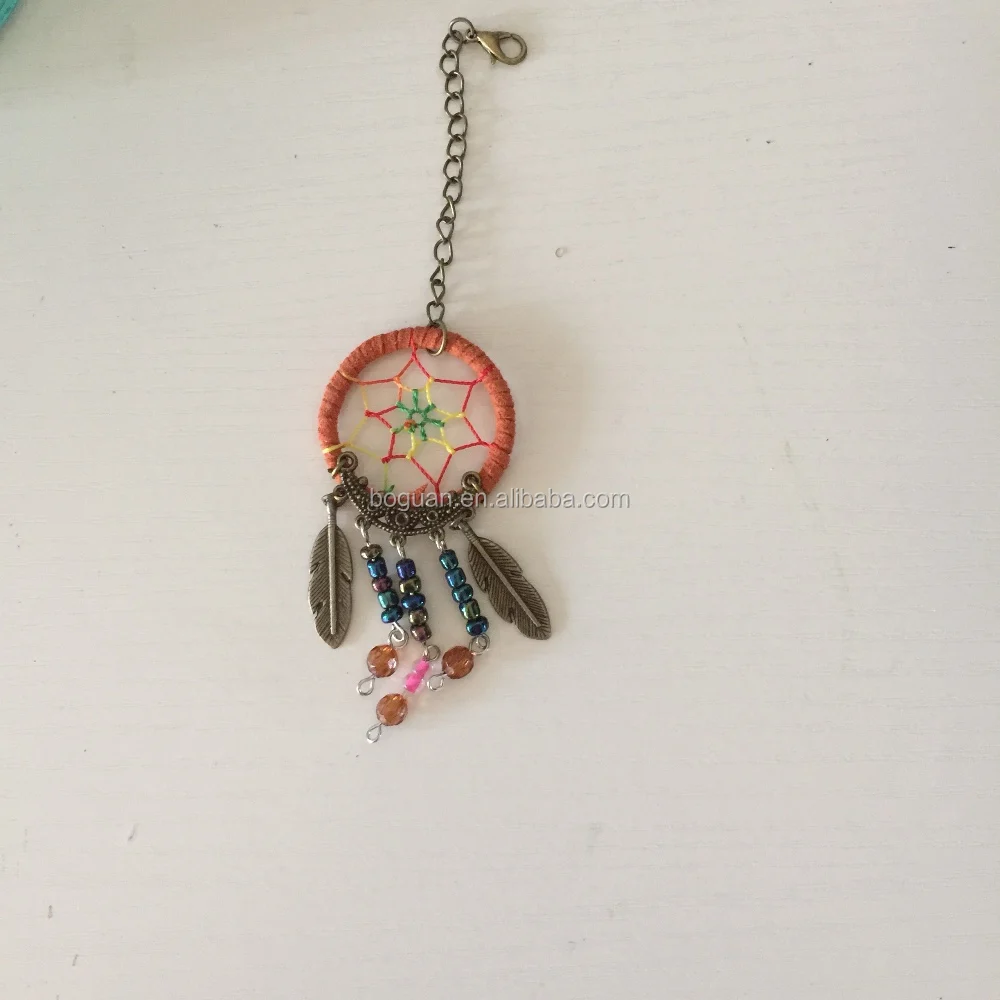Chinese Dream Catcher

A decorative Native American object in the form of a hoop and net with attachments such as feathers, traditionally believed by the Ojibwa to 'filter out' bad dreams. A decorative Native American object in the form of a hoop and net with attachments such as feathers, traditionally believed by the Ojibwa to “filter out” bad dreams. Macrame Dream Catcher. A Pair & a Spare. To call this simply a dream catcher doesn't do it justice. This stunning wall hanging would look great in a nursery, bedroom, or anywhere in your home. Macrame Dreamer from A Pair & a Spare. Hanging Macrame Chair. Big discount about chinese dream catcher at DHgate Black Friday & cyber Monday. You can buy chinese dream catcher with preferential price and various promo code from DHgate Black Friday & cyber Monday with fast delivery.
| Articles by alphabetic order | |||||||||||||||||||||||||
| A | B | C | D | E | F | G | H | I | J | K | L | M | N | O | P | Q | R | S | T | U | V | W | X | Y | Z |
| Â | Ā | Ḍ | Ḥ | Ī | Ḷ | Ṃ | Ṇ | Ñ | Ṅ | Ṛ | Ṣ | Ś | Ṭ | Ū | Ö | Ō | |||||||||
| 1 | 2 | 3 | 4 | 5 | 6 | 7 | 8 | 9 | 0 | ||||||||||||||||
I was wondering where. You got the number 10 from.A tradional dream catcher has 7-13 points with 7 representing the 7 nations or the 7 grandfathers. 8 is also common and reptesents the 8 legs of the spider. So saying that 10 points is somewhat untrue.
Chinese Dream Catcher Tattoo
Long ago when the world was young, an old Lakota spiritual leader was on a high mountain and had a vision. In his vision, Iktomi, the great trickster and teacher of wisdom, appeared in the form of a spider. Iktomi spoke to him in a sacredlanguage that only the spiritual leaders of the Lakota could understand. As he spoke Iktomi, the spider, took the elder's willow hoop which had feathers, horsehair, beads and offerings on it and began to spin a web.
He spoke to the elder about the cycles of life...and how we begin our lives as infants and we move on to childhood, and then to adulthood. Finally, we go to old age where we must be taken care of as infants, completing the cycle. 'But,' Iktomi said as he continued to spin his web, 'in each time of life there are many forces -- some good and some bad. If you listen to the good forces, they will steer you in the right direction. But if you listen to the bad forces, they will hurt you and steer you in the wrong direction.' He continued, 'There are many forces and different directions that can help or interfere with the harmony of nature, and also with the great spirit and all of his wonderful teachings.'
All the while the spider spoke, he continued to weave his web starting from the outside and working towards the center. When Iktomi finished speaking, he gave the Lakota elder the web and said....'See, the web is a perfect circle but there is a hole in the center of the circle.' He said, 'Use the web to help yourself and you people to reach your goals and make use of your people's ideas, dreams and visions. 'If you believe in the great spirit, the web will catch your good ideas -- and the bad ones will go through the hole.'
The Lakota elder passed on his vision to his people and now the Sioux Indians use the dream catcher as the web of their life. It is hung above their beds or in their home to sift their dreams and visions. The good in their dreams are captured in the web of life and carried with them...but the evil in their dreams escapes through the hole in the center of the web and are no longer a part of them.
Chinese Dream Catcher
They believe that the dream catcher holds the destiny of their future.

Source
In some Native American cultures, a dreamcatcher (or dream catcher; Lakota: iháŋbla gmunka, Ojibwe: asabikeshiinh, the inanimateform of the word for 'spider' or Ojibwe: bawaajige nagwaagan meaning 'dream snare') is a handmade object based on a willow hoop, on which is woven a loose net or web. The dreamcatcher is then decorated with sacred items such as feathers and beads.
Origin
Dreamcatchers originated with the Ojibwe people and were later adopted by some neighboring nations through intermarriage and trade. It wasn't until the Pan-Indian Movement of the 1960s and 1970s that they were adopted by Native Americans of a number of different nations. Some consider the dreamcatcher a symbol of unity among the various Indian Nations, and a general symbol of identification with Native American or First Nations cultures. However, many other Native Americans have come to see dreamcatchers as over-commercialized, offensively misappropriated and misused by non-Natives.
The Ojibwe people have an ancient legend about the origin of the dreamcatcher. Storytellers speak of the Spider Woman, known as Asibikaashi; she took care of the children and the people on the land. Eventually, the Ojibwe Nation spread to the corners of North America and it became difficult for Asibikaashi to reach all the children. So the mothers and grandmothers would weave magical webs for the children, using willow hoops and sinew, or cordage made from plants. The dreamcatchers would filter out all bad dreams and only allow good thoughts to enter our mind. Once the sun rises, all bad dreams just disappear. American ethnographer Frances Densmore writes in her book Chippewa Customs (1929, republished 1979, pg. 113):
Japanese Dream Catcher In Stained Glass
- Even infants were provided with protective charms. Examples of these are the 'spiderwebs' hung on the hoop of a cradle board. These articles consisted of wooden hoops about 3½ inches in diameter filled with an imitation of a spider's web made of fine yarn, usually dyed red. In old times this netting was made of nettle fiber. Two spider webs were usually hung on the hoop, and it was said that they 'caught any harm that might be in the air as a spider's web catches and holds whatever comes in contact with it.'
Traditionally, the Ojibwe construct dreamcatchers by tying sinew strands in a web around a small round or tear-shaped frame of willow (in a way roughly similar to their method for making snowshoe webbing). The resulting 'dream-catcher', hung above the bed, is used as a charm to protectsleepingpeople, usually children, from nightmares.
Tay Ping Hui 郑斌辉
The Ojibwe believe that a dreamcatcher changes a person's dreams. According to Konrad J. Kaweczynski, 'Only good dreams would be allowed to filter through... Bad dreams would stay in the net, disappearing with the light of day.' Good dreams would pass through and slide down the feathers to the sleeper.

Dreamcatcher Parts
When dreamcatchers were originally made, the Ojibwe people used willow hoops and sinew or cordage made from plants. The shape of the dreamcatcher is a circle because it represents how giizis – the sun, moon, month – travel each day across the sky. There is meaning to every part of the dreamcatcher from the hoop to the beads embedded in the webbing.

Popularization
In the course of becoming popular outside of the Ojibwe Nation, and then outside of the pan-Indian communities, various types of 'dreamcatchers, 'many of which bear little resemblance to the traditional styles, are now made, exhibited, and sold by New age groups and individuals. According to Philip Jenkins, this is considered by many traditional Native peoples and their supporters to be an undesirable form of cultural appropriation.
Source
Wikipedia:Dream catcher